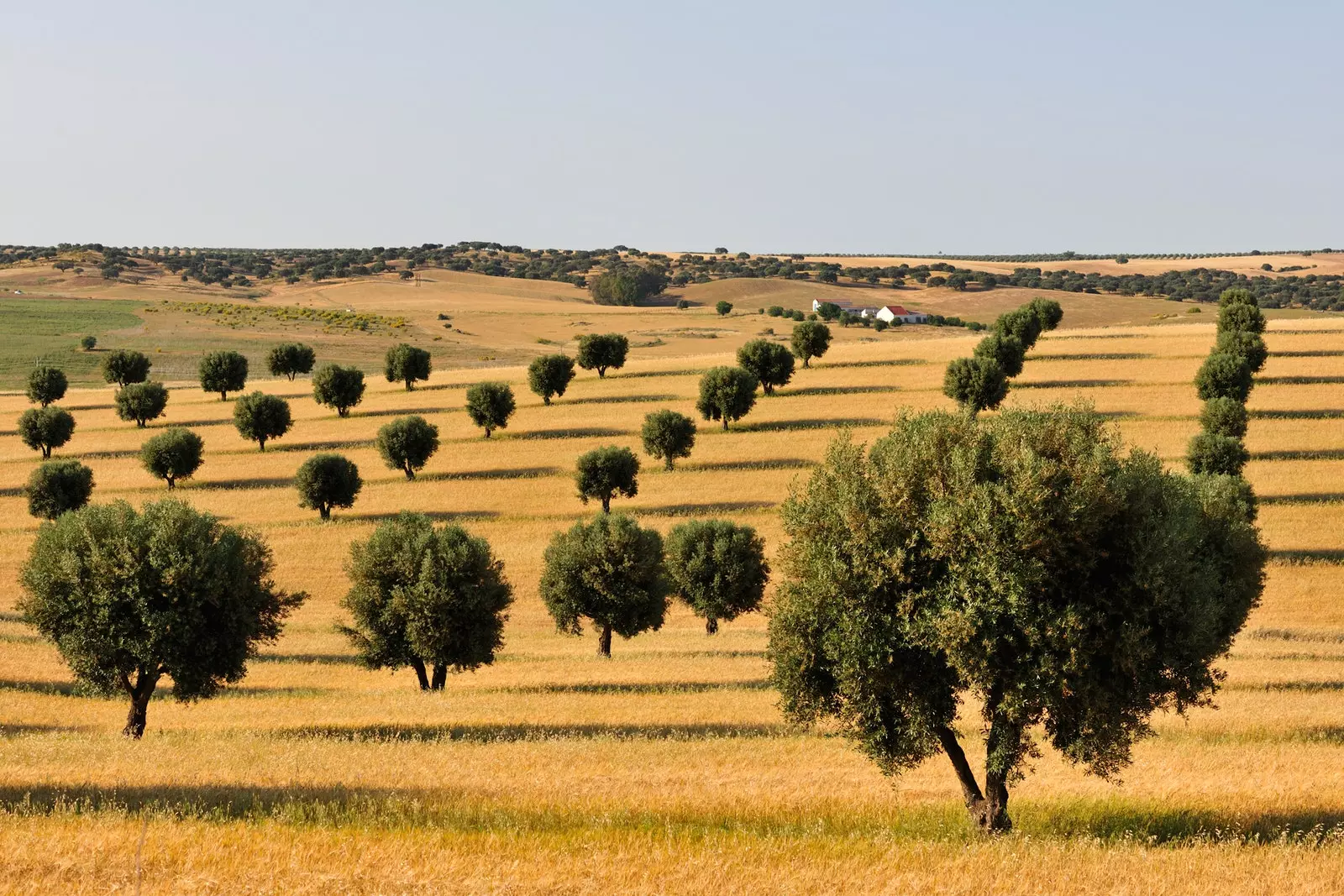
We are going on a route through the Baixo Alentejo through fields of olive trees and wheat
“A light breeze runs through the vague fields to me.
I think of you, I whisper your name; and it's not me: I'm happy"
To introduce you to the Portuguese region of ** Alentejo **, we chose an illustrious Portuguese, the poet Fernando Pesoa. And it is that these verses, like some others of his heteronym Alberto Caeiro, come to us perfectly to summarize the feeling of these lands, a reflection in some way of the nearby Extremadura.
There are also those who see the Alentejo as a symbol of the essence of Portugal. Travel along its long and lonely roads, contemplate its wide and warm landscapes, fall in love with the melancholic austerity and its calm in the sun.
Here you will continually see dualities: castles and walls, intramural and extramural, churches and convents, plains and rocks, tapestries and marble, sunsets and sunrises, high and low.
It almost sounds like a poem. The Alentejo route that we have prepared for you is continually divided into these words.
The Alentejo region is famous for the production of cork , thanks to its large number of cork oaks; pottery, tapestries and rugs.
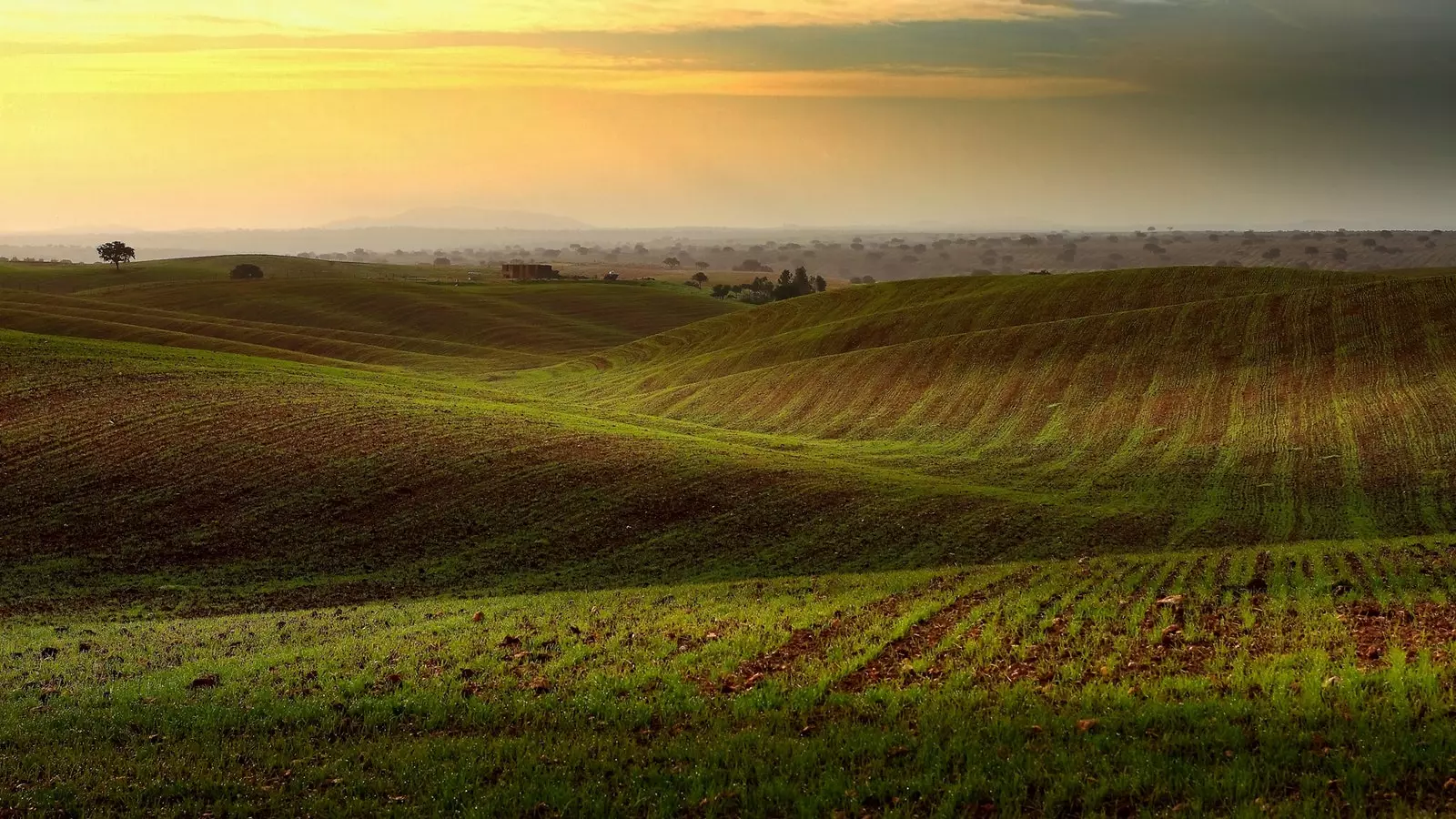
The landscape of Beja, one of the jewels of Baixo Alentejo
The first part of this route is offered below, with the south, the Lower Alentejo. The second route... You will have it right away.
But first we are going to ask you to close your eyes to fly, maybe on a rug woven in Portalegre or Arraiolos, and land softly while the breeze from the poem we were quoting disheveles your hair, then brushing it with your fingers Estremoz marble, and then you will taste on the palate one of Borba or Regueros de Montaraz wines and you will savor a delicious dish like the Alentejo pork waves regional crumbs.
And now yes, open your eyes and read: the southern Alentejo, even less known than the north, has among its jewels beja , the discreet capital of the lower region, which you will easily find if you travel from Seville to Lisbon.
The romans signed here peace with the Lusitanian tribes, naming the site Pax Julia. In the month of May you can enjoy a recreation of life in classical times with the Beja Romana festival, which adorns the entire old part.
Centuries later, the Muslims They will be the ones that give the almost definitive name, Baja, to the town, due to the pronunciation of Pax Julia, which evolved into the current Beja.
Beja was an important geographical point of Portugal in the Middle Ages. Their castle , which King Dom Dinis ordered to be built on the remains of a Roman building, has a tower of tribute whose 200 steps are worth climbing to see the Guadiana valley from above.
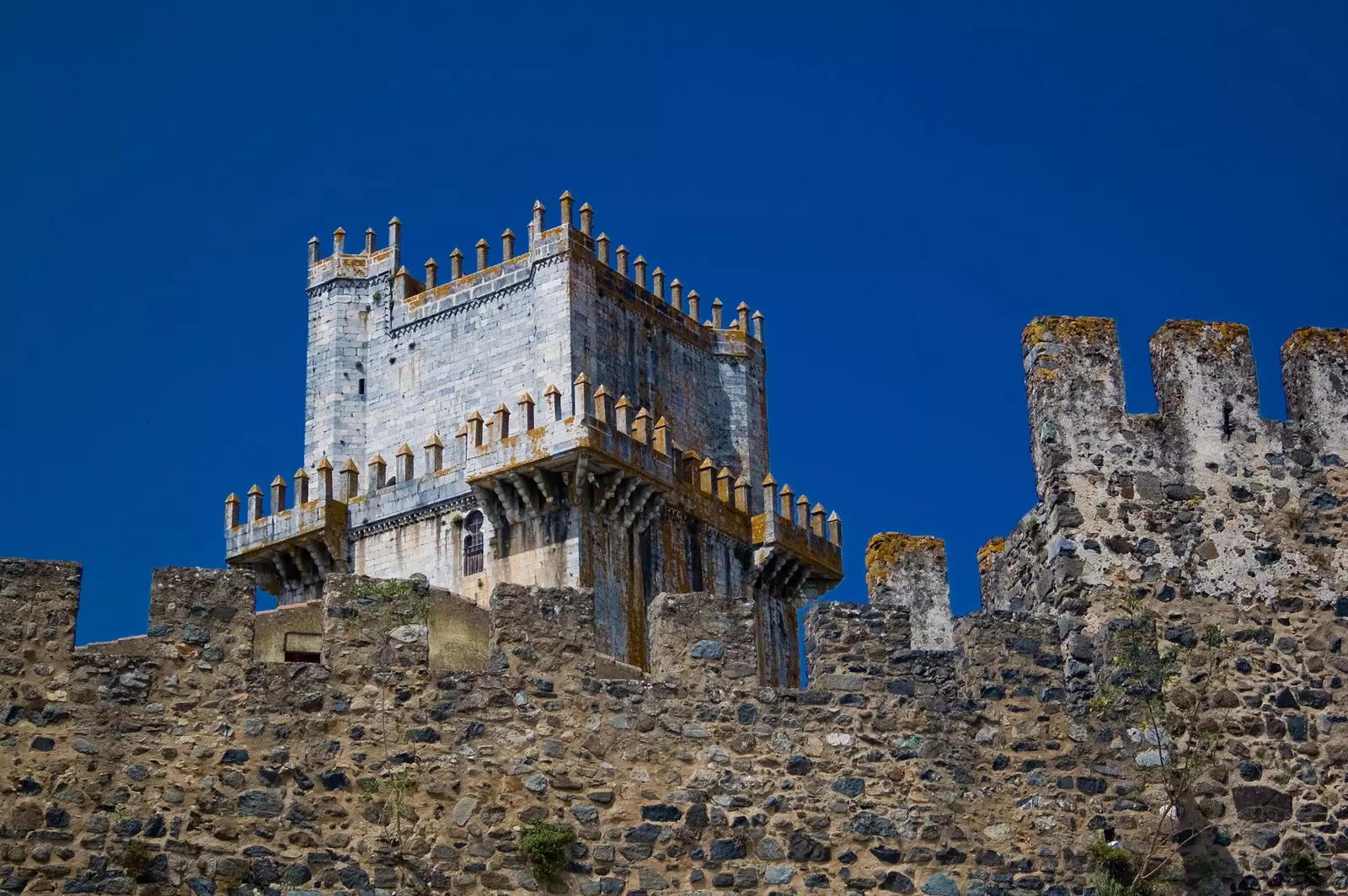
The medieval castle of Beja, overlooking the Guadiana valley
The followers of historical loves and other fatigues have in the Convent of the Conception the window from which the Portuguese nun Mariana fell in love with an officer, the Count of Chamilly, back in the seventeenth century.
The count, a French officer, came with the troops of King Louis XIV to fight against the Spanish, and he met a beautiful nun who wrote him five ** Letters from the Portuguese nun, a small book that you can find published in Spanish,* * and that describes the unexpected passion that Mariana felt for the Gallic count.
If you are a romantic or in love with hardened love, stop reading here... Have you already left? For the rest, we will tell you that, apparently the letters are apocryphal. Passionate, but not written by the nun Mariana.
In any case, the window, the castle, the walls, the convent... We recommend you visit everything. The convent is currently a museum of painting and sculpture.
In Beja several important cooperatives of farmers work, current witness of the struggle between those who plowed the land and those who owned it. Today, agriculture and livestock continue to be important sources of income in the area.
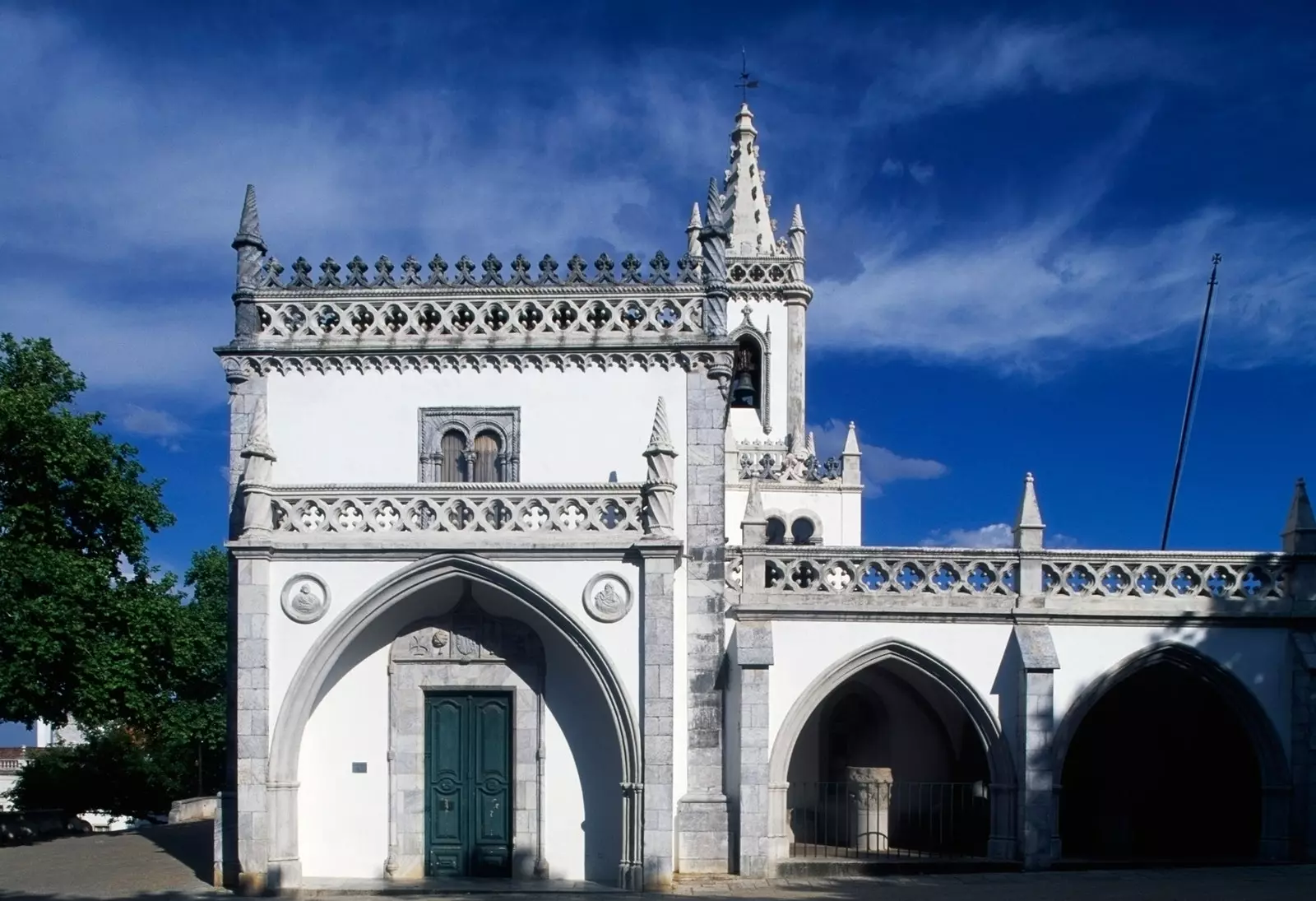
The Convent of the Conception where the nun Mariana lived
From Pax Julia to another of our favorite towns, which has its charm despite what some travel guides will tell you: Serpa it is one of the white villages of Portugal.
Near the Guadiana, there are many of these towns with walls and a castle. castles and walls, if you remember our intro.
Visit the gates of Beja and Moura (another town that we will approach shortly) and look for the chimneys typical of this area. Some houses also have windows from the 15th century. Everything ready for your eyes and your camera.
When you get tired, look Lebrinha , a very popular place where you can have a fresh beer or a snack. In both Beja and Serpa it is easy to find places to eat well and cheaply.
Another attraction close to Serpa is the Pulo do Lobo , a waterfall of the river Limas less than 20 kilometers from the town.
Unexpected landscape, it will offer you a respite from towns and will invite you, nearby, to have a drink at the ** Pousada de Sao Gens , with unfathomable views** and a place that you are already talking about Saramago in his book Viaje a Portugal.
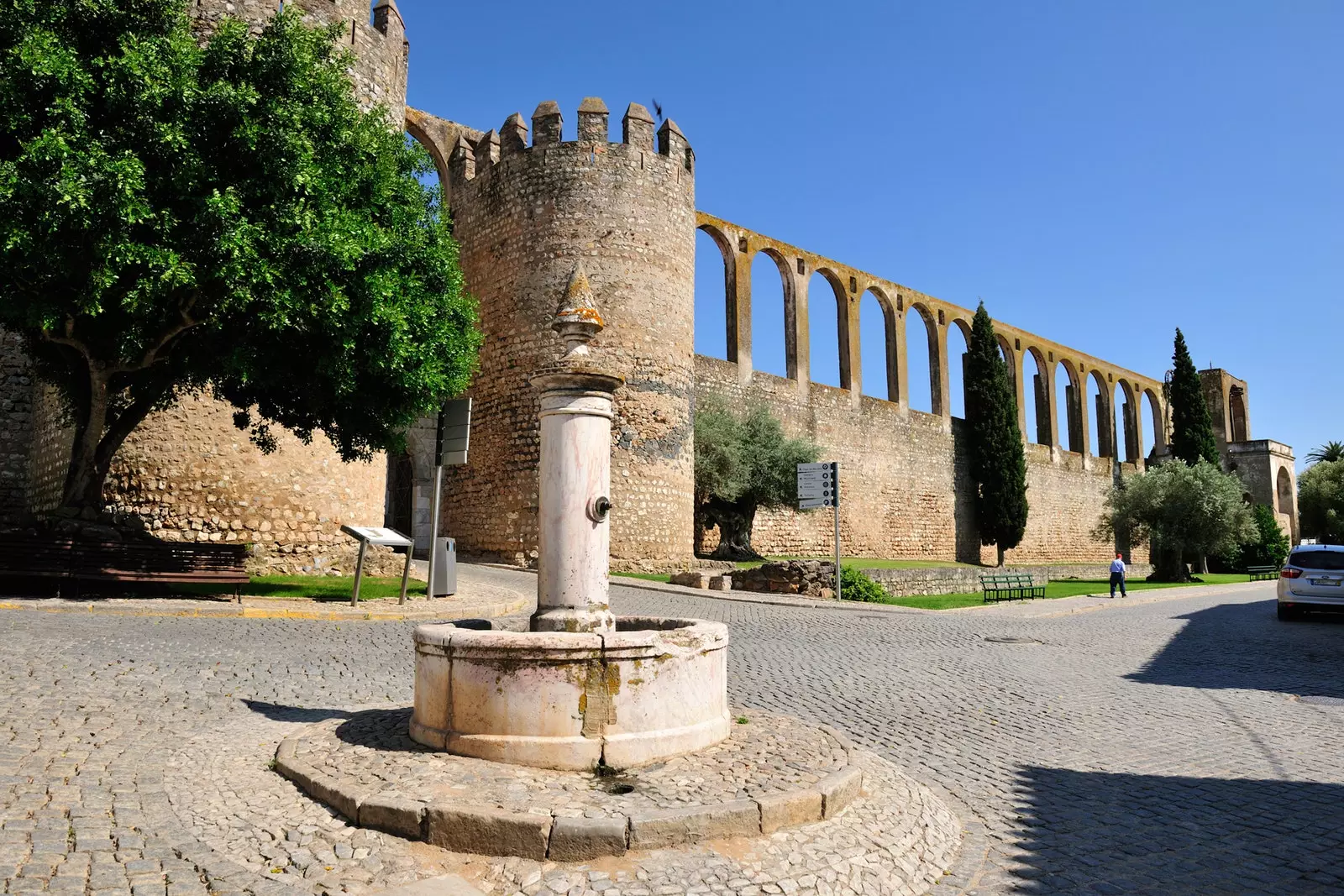
Ancient aqueduct of Serpa
From Serpa go to Mertola, the Roman Mirtillis/Myrtillis called Mertolah by the Arabs who later lived it. Mértola, which looks like a bird's name, is between two rivers, the Guadiana and the Oreias.
about his old arab kasbah one gets up castle built and managed at the time by the order of Santiago. Its walls remain for the visitor, especially two towers, one converted into a church and the other into a clock, centuries apart.
If you look for the location on a map, you will see that Mértola is in the Guadiana Valley Natural Park, that accompanies the river, a star guest in the region, and where you can see the mills that have been operating for centuries thanks to its waters.
As the Portuguese we just quoted says, Saramago , in his traveling book: “The Mértola also came Guadiana (…) This river was born beautiful, and beautiful it will end, it is its destiny and it has to be fulfilled”.
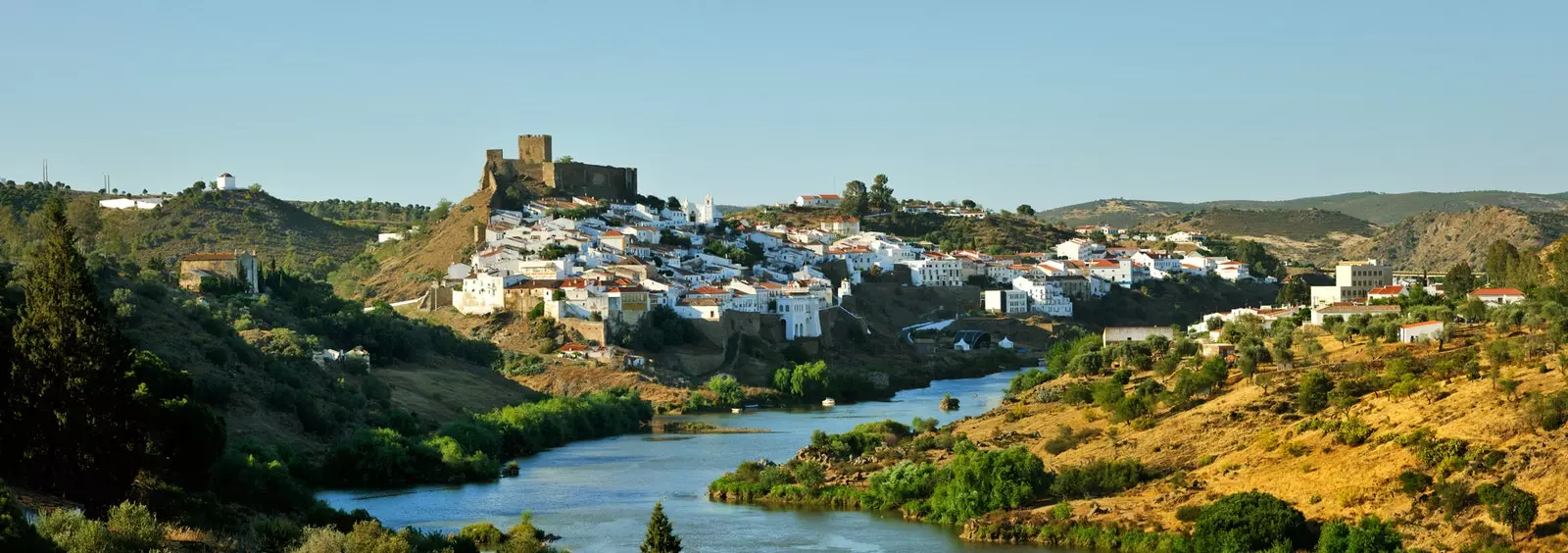
The historic little town of Mértola, between the Guadiana and Oreias rivers
Near the Portuguese border we find Moura, a thermal station with abundant Arab heritage among the olive trees that surround it.
famous for its oil , which you can also take with you in your suitcase, whispers the legend of Salúquia. Salúquia was the daughter of an Arab nobleman whose fiance was arrested and killed by some Christians when he was on his way to the castle to marry her.
When Salúquia discovered what had happened, she committed suicide by throwing herself from the tower that today bears her name. Pay homage to him by going to the castle and stroll through the gardens public, nice and cool, especially at sunset in summer.
From here you can change the destination a bit and head to the Alqueva reservoir, what we are talking about here.
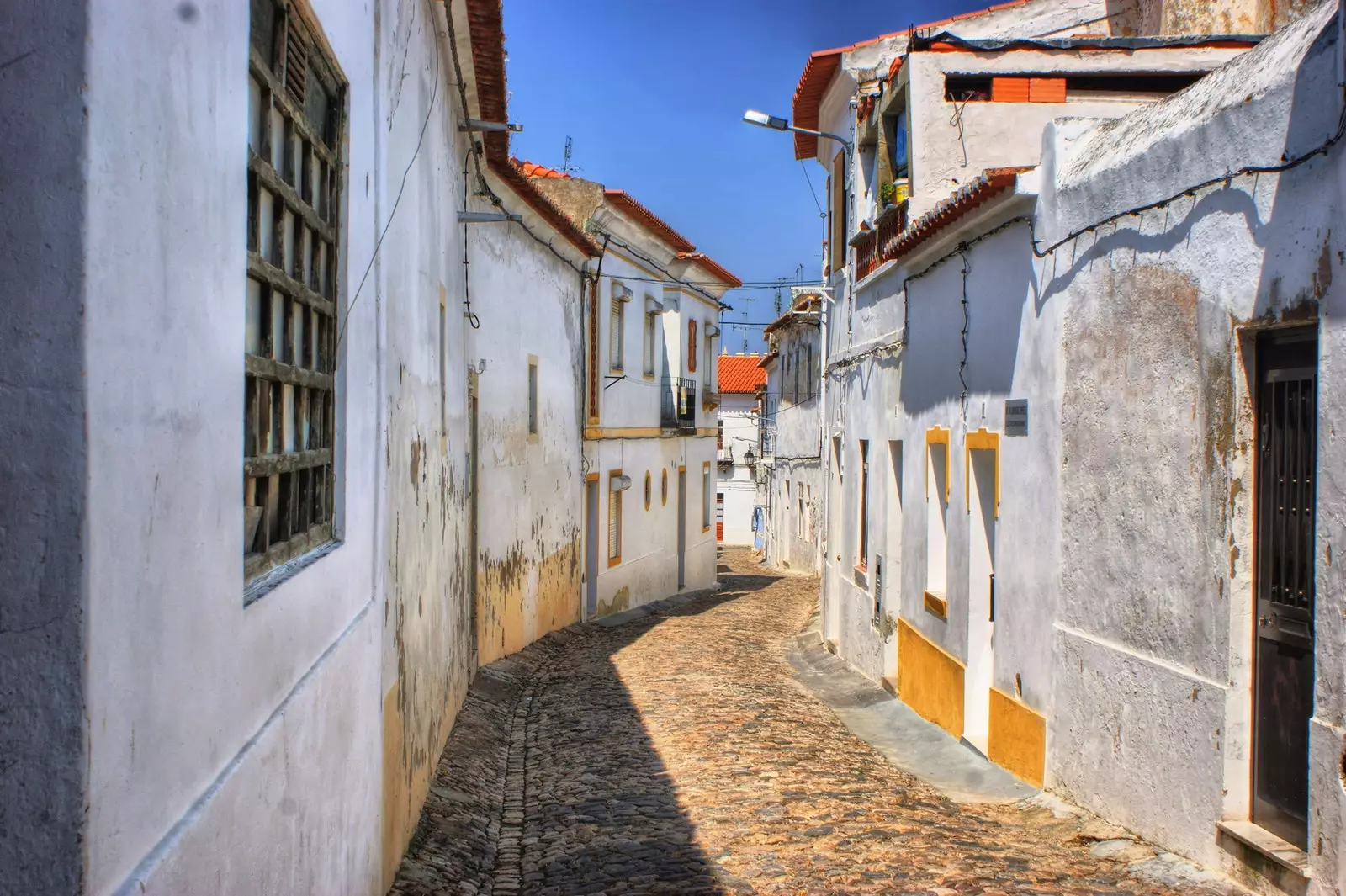
Take home a bottle of Moura oil
As if we were walking through the letter eme, sliding down its slopes, we stayed in… Mmmmm… Monsaraz.
Like many Alentejo towns, you will see that Monsaraz was built on top of a mountain and near the Guadiana river, thus taking advantage of natural resources for centuries to supply and protect themselves.
The typical Portuguese image of this town offers you both sunrises and sunsets worthy of your steps and your gaze, so you can enjoy the calm of its white houses and its balconies and wrought iron bars.
They passed through here Romans, Visigoths, Jews, Arabs and Christians, who were the ones who ended up staying thanks to the Templars.
In the Rua Direita you have the most interesting buildings in Monsaraz. Do not miss them and then rest in one of its pleasant terraces, already probably full of the local and tourist bustle. Near Monsaraz, you can stop at Reguengos of Monsaraz, with good places to eat and to buy wine or oil.
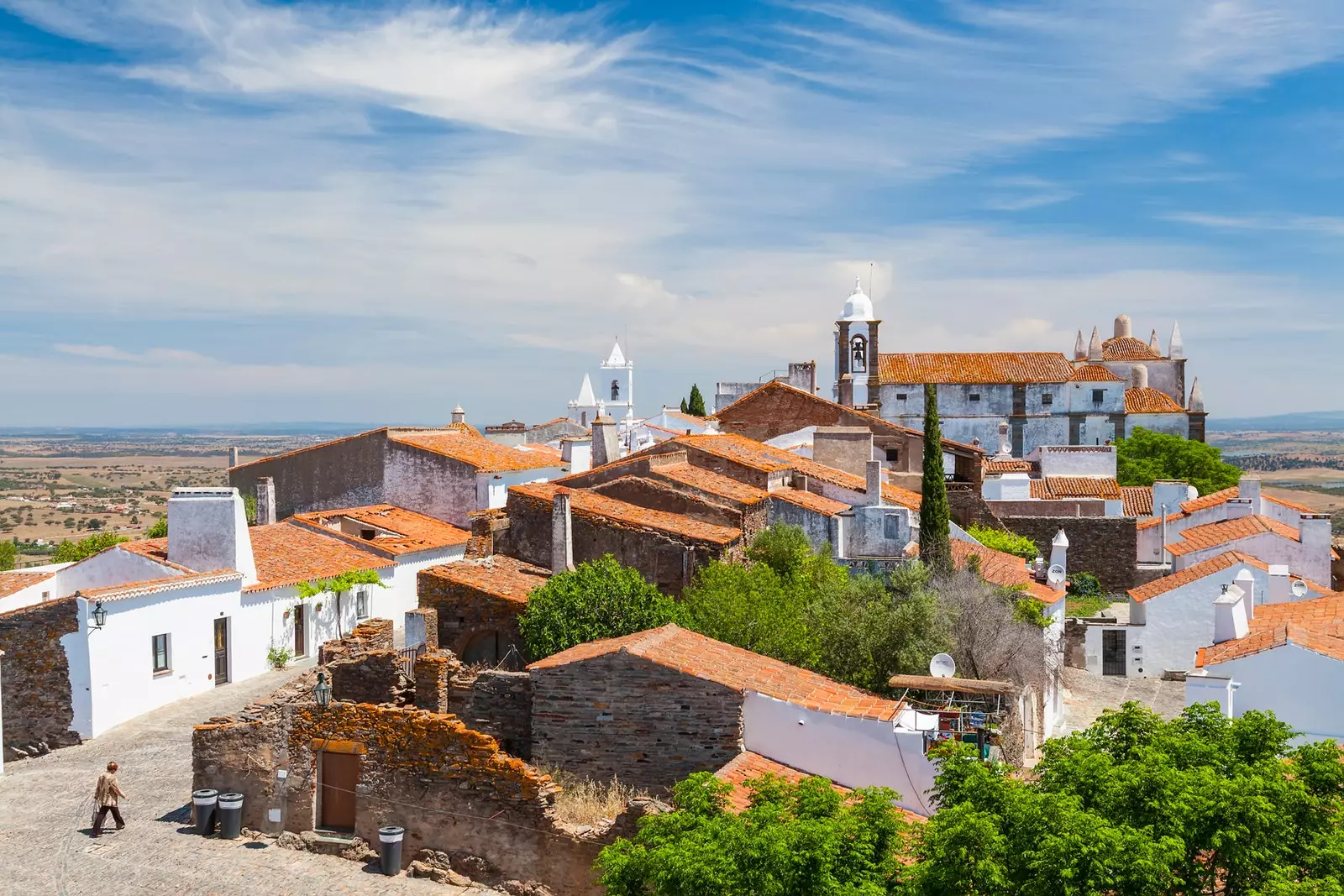
The Alentejo town of Monsaraz, with its typical white houses
The one who signs this article is going to allow himself the license to cite here a town that, perhaps at a tourist or Instagram level, is not the most outstanding in the Alentejo, but it is at a historical level: Big it.
Of Roman origin and white houses, José Afonso made her the protagonist of one of his songs, "Grândola, vila Morena", which served as a signal to the rebel soldiers on April 25, 1974 to start the carnation revolution, that ended the Salazarist dictatorship.
In the village, history buffs have a monument dedicated to the song, with a huge carnation drawn and the lyrics and music that went down in history about the classic Portuguese tiles, in addition to the signature of the rebel captains that April.
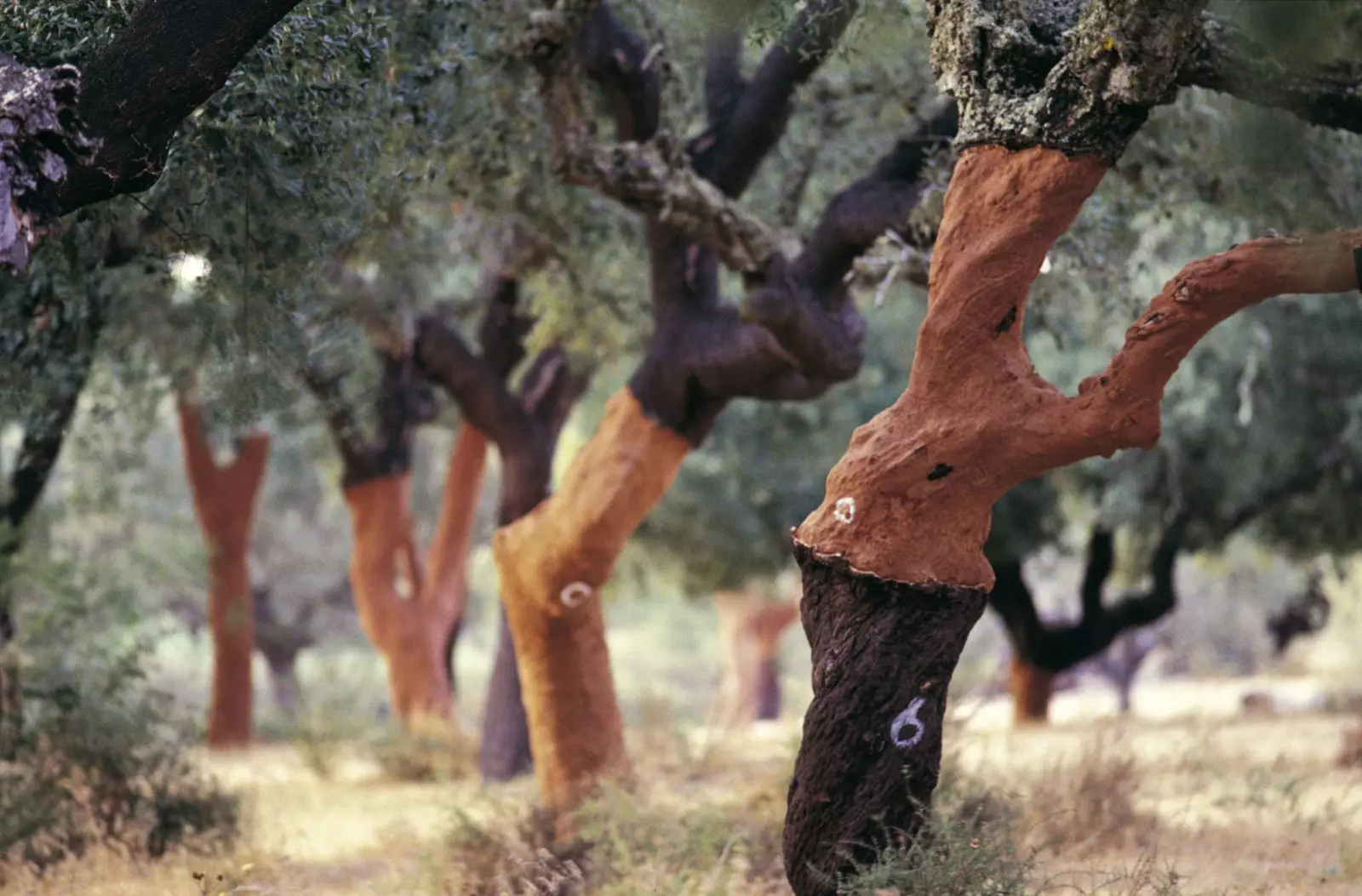
The cork oak, one of the trees in the region, from whose exploitation cork is obtained
From here, we can approach Alcácer do Sal Y Santiago do Cacem. The first is on the banks of the sado river and it is surrounded by salt flats (it is not in vain that its name comes to us), with a castle that now occupies a pousada where you can spend the night or eat something.
Apart from the usual churches, you can see the Chafariz, a fountain decorated with tiles narrating the history of the city.
Santiago do Cacem, walled by the order of the Temple, it has a castle, yes, although it is occupied by a cemetery and a old town to walk through.
And it is that, as Saramago says in his particular Portuguese guide: "The traveler fulfills his obligation: he travels and says what he sees." So we have done.
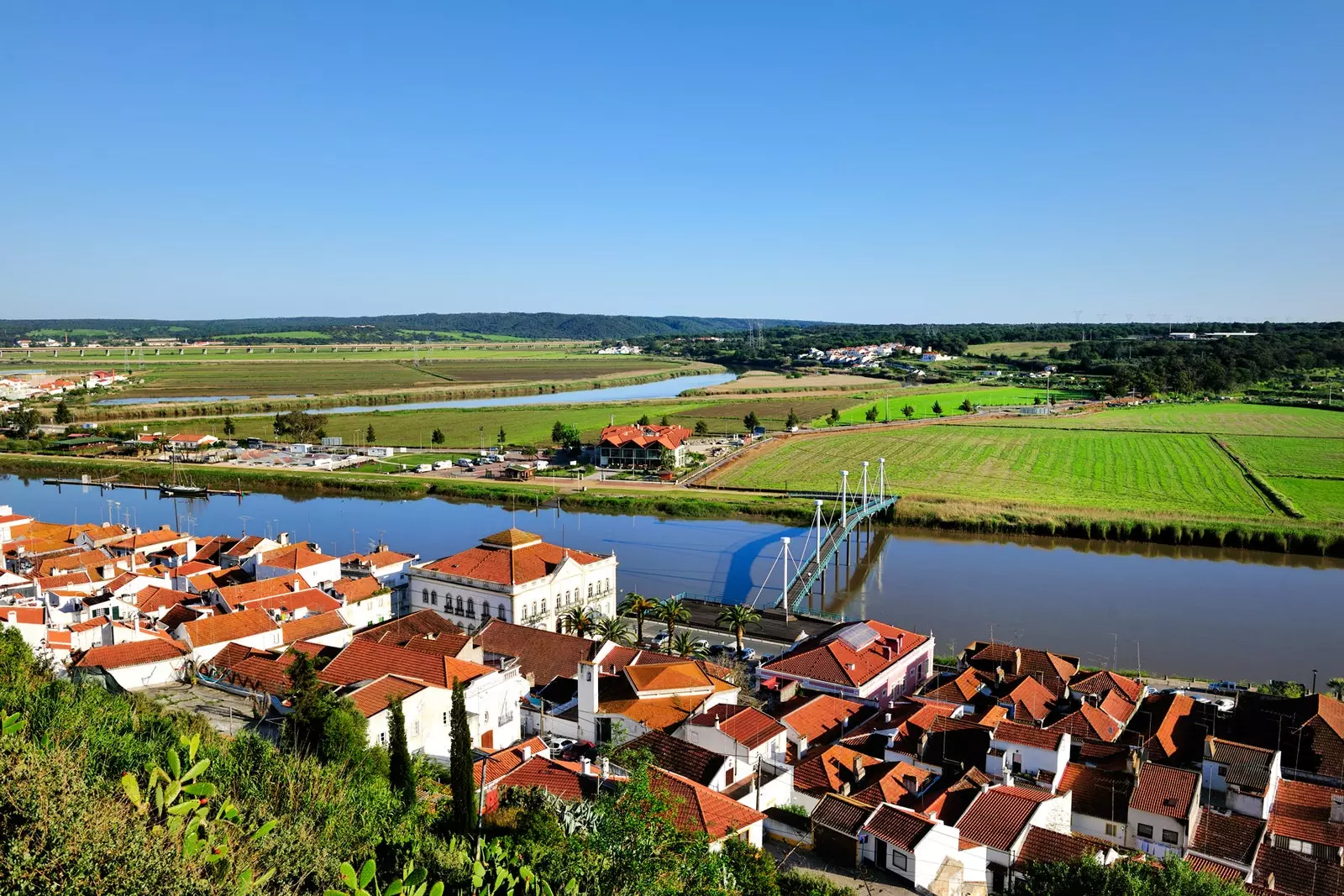
Rice fields in Alcacer do Sal
